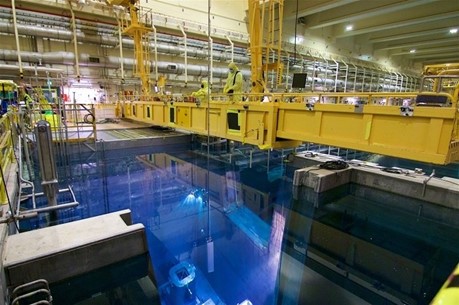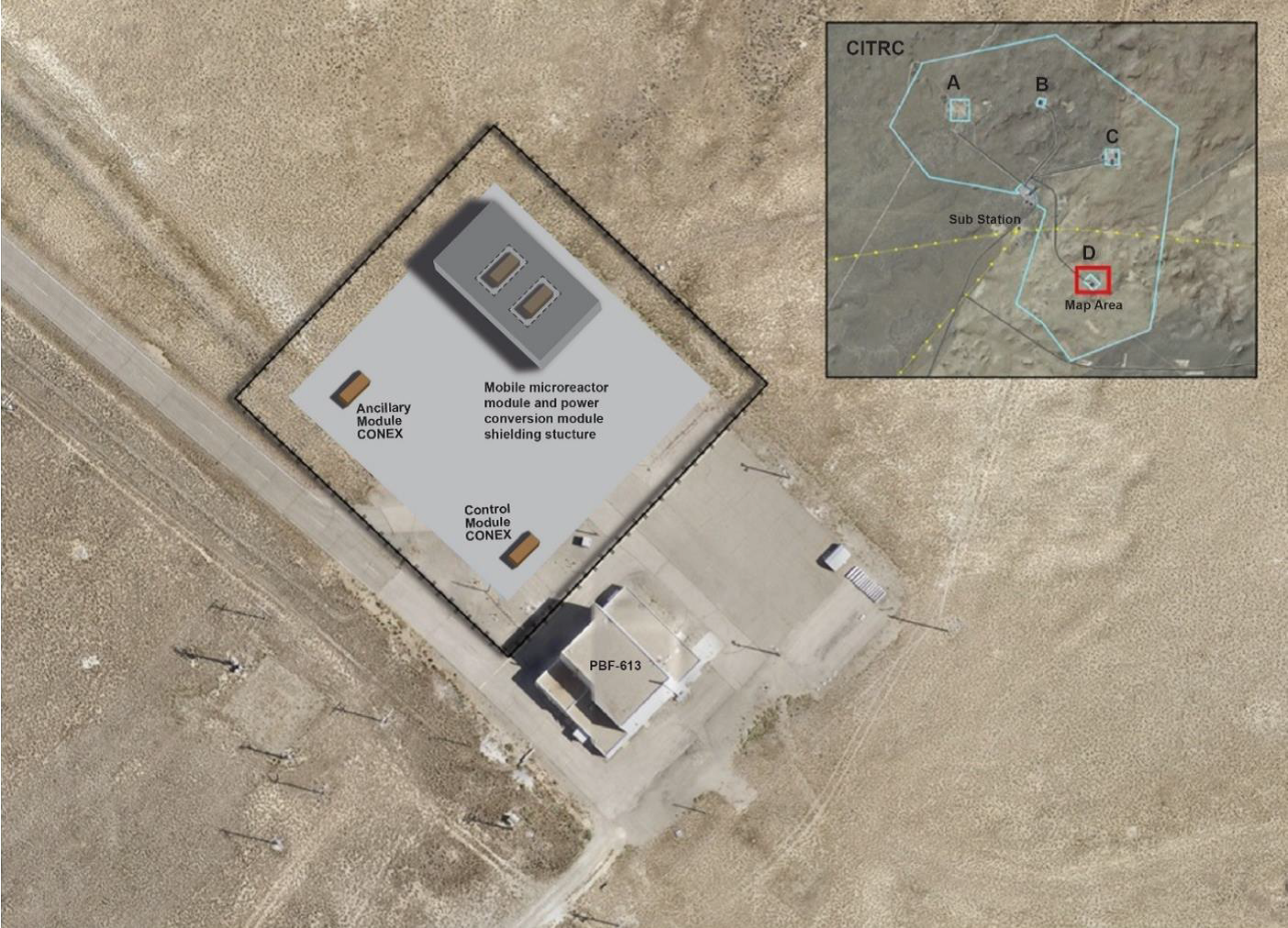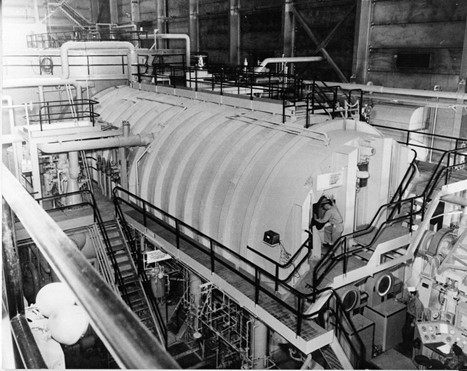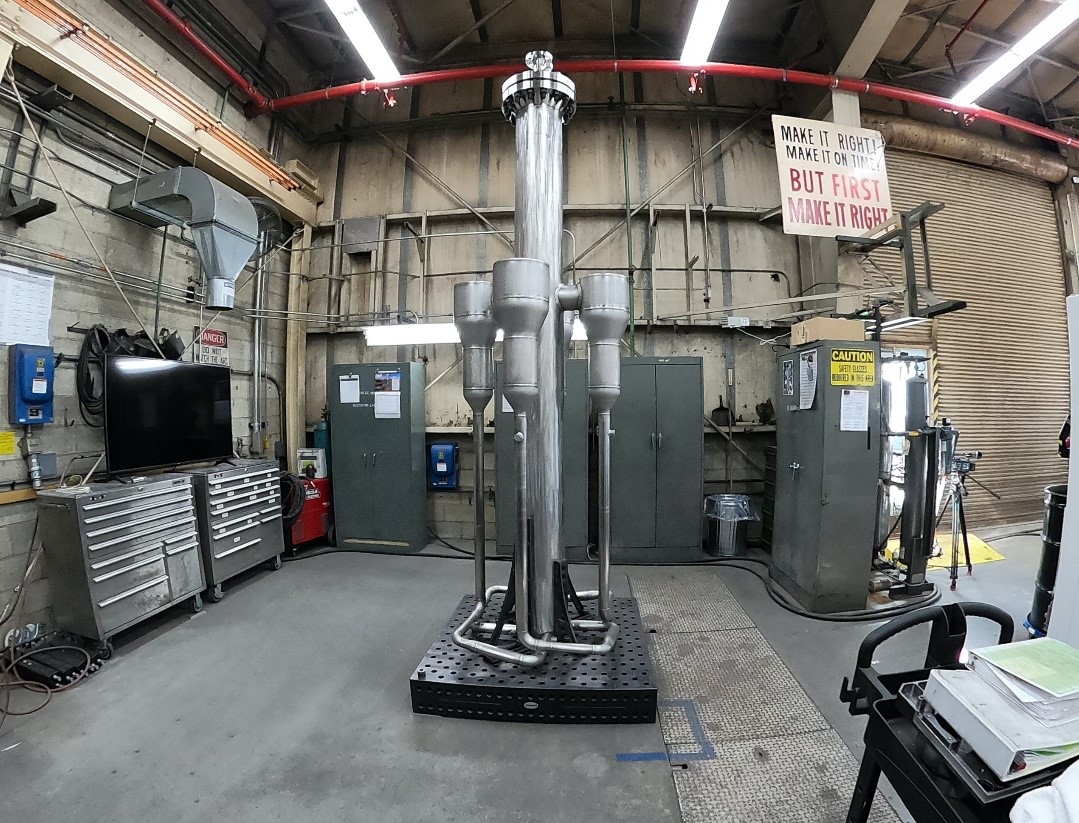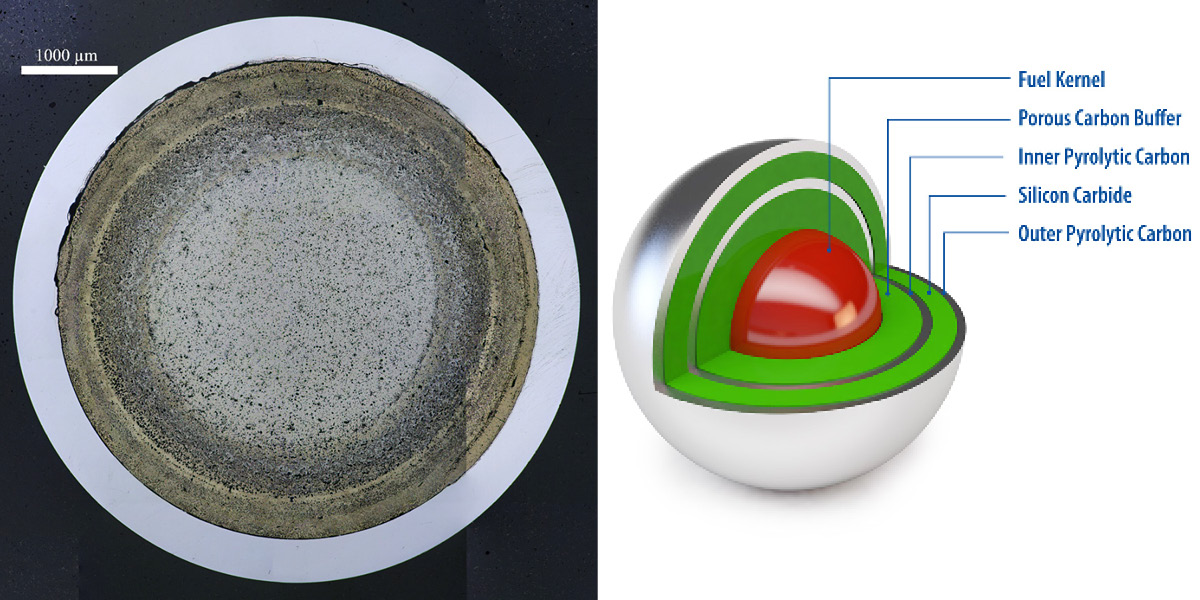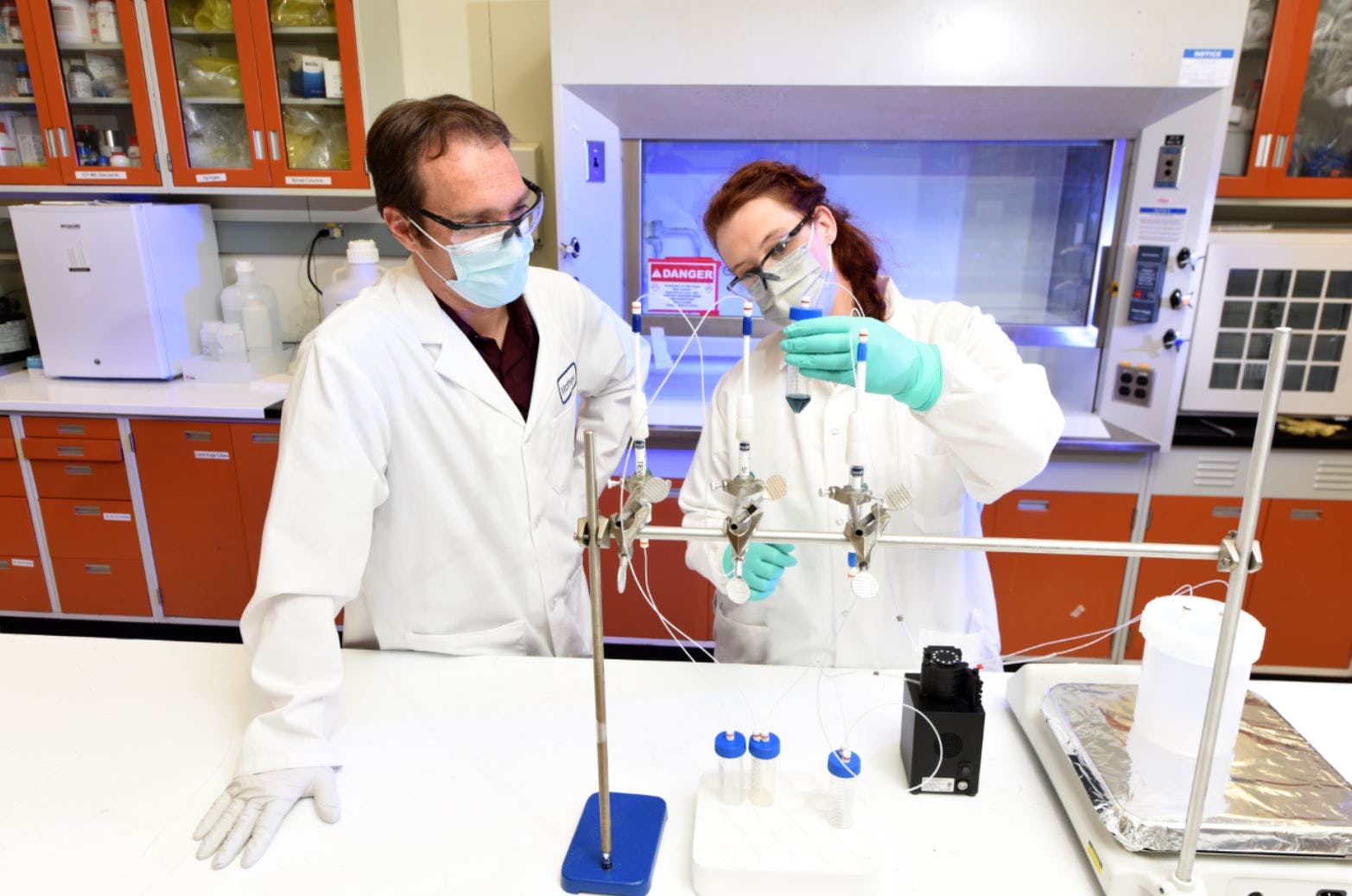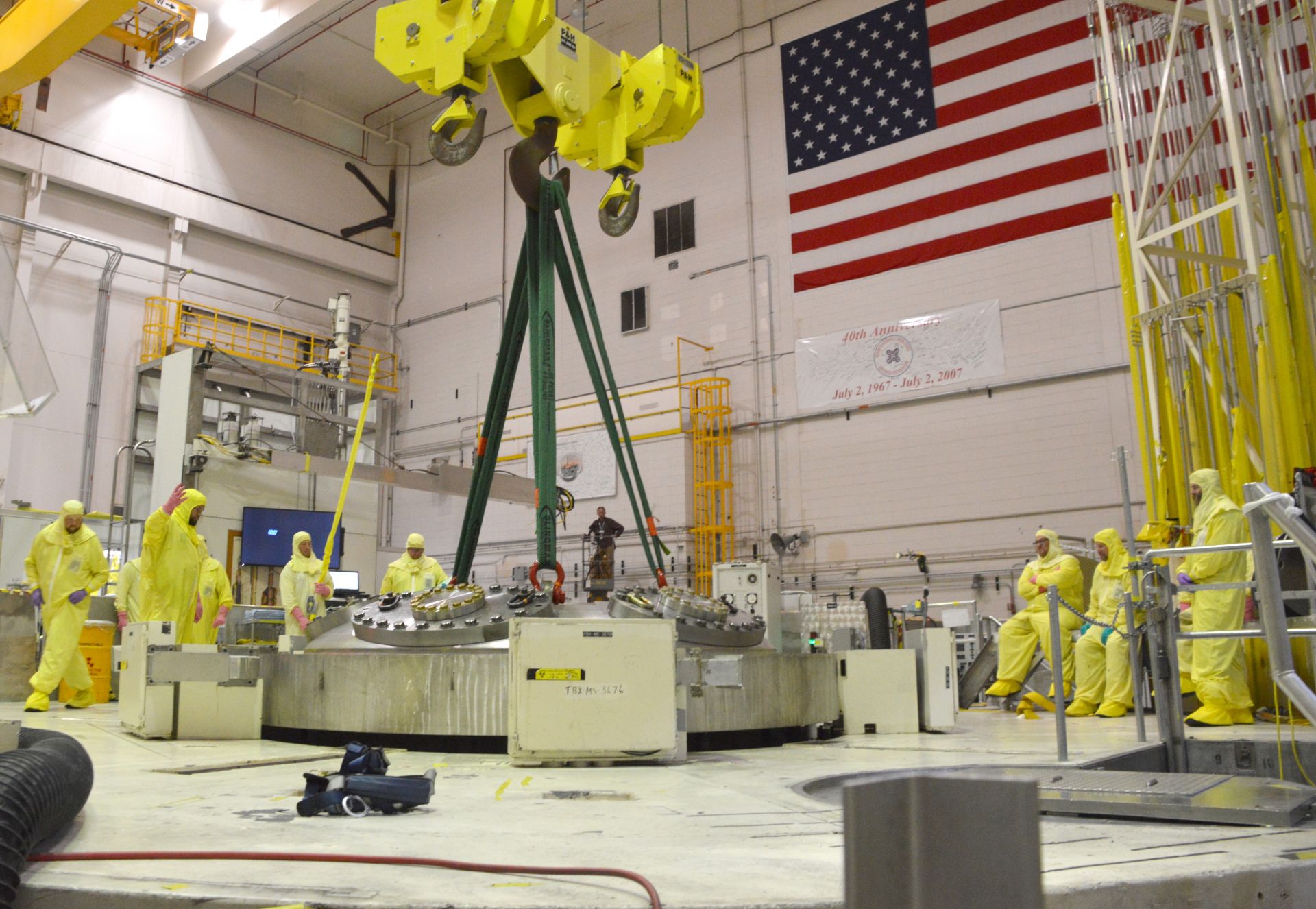The Project Pele microreactor will be fueled by TRISO fuel particles like those shown here. (Photo: INL)
NETS participants are credited with helping relaunch the nation’s domestic production of Pu-238 to fuel the Mars Perseverance rover. (Photo: NASA)
Connecting nuclear engineers and scientists with space exploration missions has been a focus of the American Nuclear Society’s Aerospace Nuclear Science and Technology Division since its creation in 2008. One of the main ways those connections are made is through the Nuclear and Emerging Technologies for Space (NETS) conference, which the division supports in conjunction with the National Aeronautics and Space Administration.
An aerial view of the Radioactive Waste Management Complex at the Idaho National Laboratory site. (Photos: DOE)
Idaho Gov. Brad Little, attorney general Lawrence Wasden, Idaho legislators, county and city representatives, and the Department of Energy’s cleanup program management staff gathered at the Idaho National Laboratory site on March 30 to mark the completion of a cleanup project that helps protect the Snake River Plain Aquifer and fulfills a commitment with the State of Idaho.
Cover of the April 1962 issue of Nuclear News (left), ATR core diagram appearing in October 1969 issue of Nuclear News (center), and cover of the October 1969 issue of Nuclear News (right).
The Department of Energy and Idaho National Laboratory announced this week that the sixth major core overhaul of the Advanced Test Reactor (ATR) is complete, after an 11-month outage that began in April 2021. The ATR was built as a key piece of mission support for U.S. Navy programs and first reached full power in 1969. Today it remains “the world’s largest, most powerful and flexible materials test reactor,” in the words of INL—quite a feat for a reactor that was planned over 60 years ago.
Spent nuclear fuel handlers move the last ATR fuel to an awaiting cask in the CPP-666 basin. (Photo: DOE)
The last spent nuclear fuel elements from Idaho National Laboratory’s Advanced Test Reactor (ATR) have been retrieved from a water-filled storage basin and transferred to a nearby dry-storage facility in accordance with a 1995 agreement with the State of Idaho, the Department of Energy’s Office of Environmental Management (EM) announced this week.
An illustration of a potential mobile microreactor site at Test Pad D in INL’s Critical Infrastructure Test Range Complex for the grid operation phase of Project Pele. (Image: DOD)
The U.S. Department of Defense (DOD) is looking to reduce its reliance on local electric grids and diesel-fueled generators at military installations. Project Pele is designed to demonstrate the technical and safety features of mobile microreactors capable of generating up to 5 MWe.
The interior of the Submarine 1st Generation Westinghouse prototype, located at the Naval Reactors Facility on the INL site, circa mid-1950s. (Photo: DOE)
The Department of Energy’s Office of Environmental Management (EM) announced on February 10 that it is set to deactivate and demolish the prototype for the reactor used for the USS Nautilus, the world’s first operational nuclear-powered submarine and the first submarine to complete a submerged transit of the North Pole.
The MARVEL microreactor prototype in the INL machine shop. (Photo: DOE)
A full-scale, electrically heated prototype for the Department of Energy’s Microreactor Applications Research Validation and Evaluation (MARVEL) project was fabricated in just nine months, according to an article published by Idaho National Laboratory on January 31. The article explains in part how a team from the lab’s machine shop created the prototype.
INL scientists Matt Snow and Jessica Ward hold a natural vanadium solution that will be separated into the cancer-treating isotope scandium-47. (Photo: INL)
Idaho National Laboratory researchers have, for the first time, used a novel technique using high-energy photons to produce scandium-47 from the element vanadium. The project is a collaboration with Jon Stoner and John Longley from Idaho State University’s Idaho Accelerator Center and Tara Mastren from the University of Utah. The results are published in the journal Applied Radiation and Isotopes.
October 8, 2021, 3:31PMUpdated December 31, 2021, 4:16PMNuclear NewsJoseph Campbell; Photos by Joseph Campbell and Peter Ritchie, INL The first of three phases of the Advanced Test Reactor’s sixth core overhaul culminated with the removal of the 31-ton stainless steel vessel top head on July 1, for the first time since 2004. The vessel and top head underwent extensive inspection, laser scanning, and upgrade as part of the overhaul. (Photo: JC)
As 2021 closes, Nuclear News is taking a look back at some of the feature articles published each month in the magazine. The October issue focused on plant maintenance and outage management with multiple articles looking at efficient ways to deal with plant maintenance. The article below looks at the herculean effort by INL to lead a full overhaul of the Advanced Test Reactor--a task that happens about every 10 years.
Out of the frenzy of nuclear technology and engineering development at the height of the Atomic Age, a few designs stand out above the rest—designs so innovative that they would not be surpassed for years, or even decades. An example of this unsurpassed design brilliance exists in the form of Idaho National Laboratory’s Advanced Test Reactor.
“ATR is really a beautiful machine,” said Sean O’Kelly, associate lab director for the ATR Complex. “The elegant cloverleaf core and control systems were a stroke of genius that solved just about every key problem of test reactor design. The designers’ solutions to those problems give us a testing capacity and flexibility that have yet to be matched.”
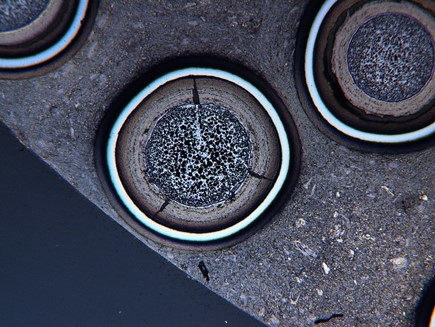


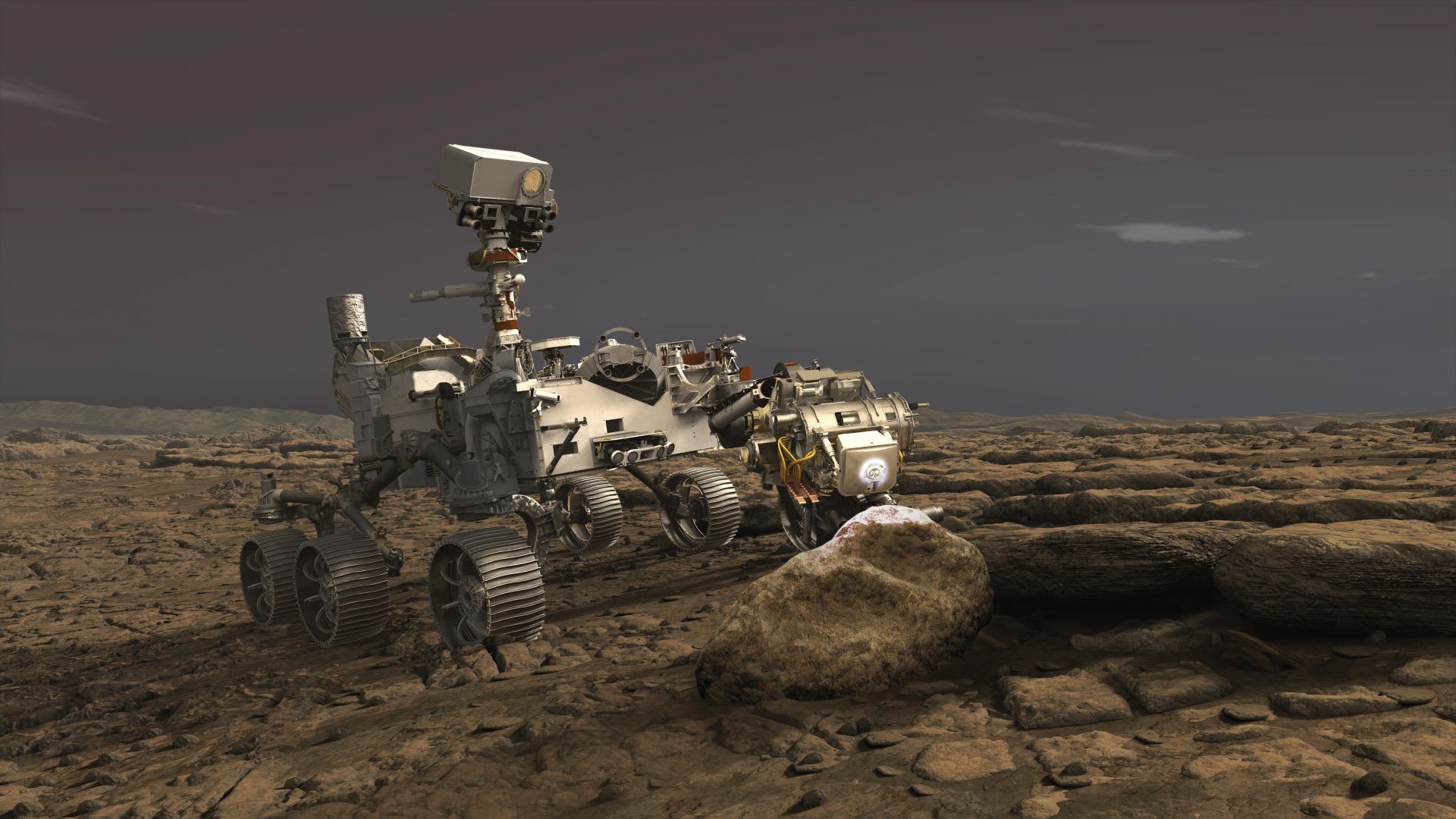

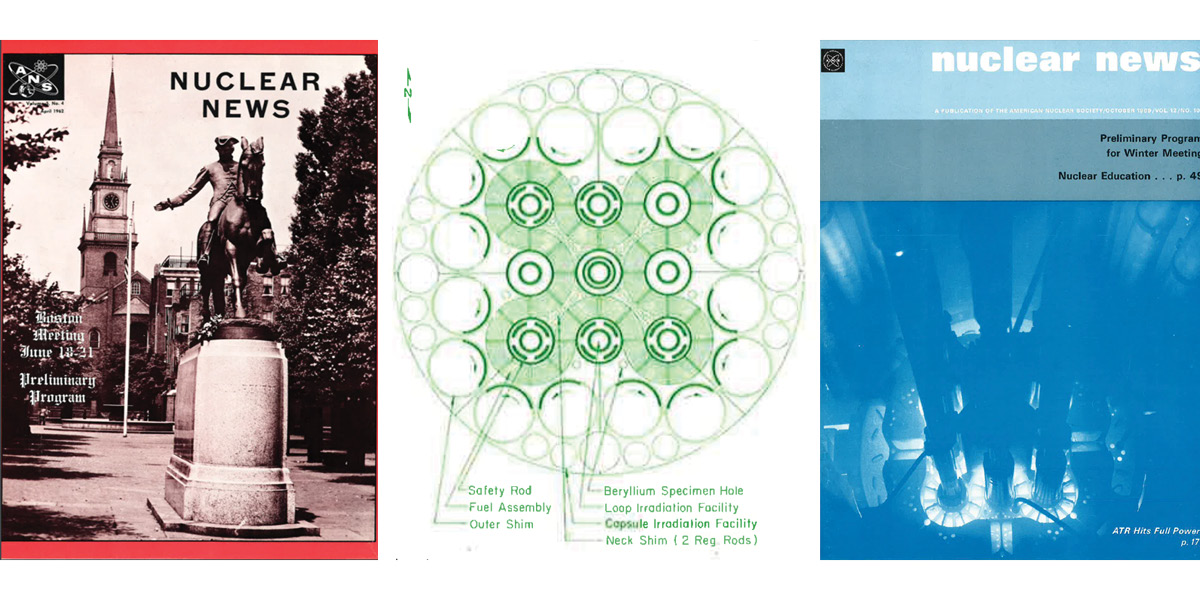

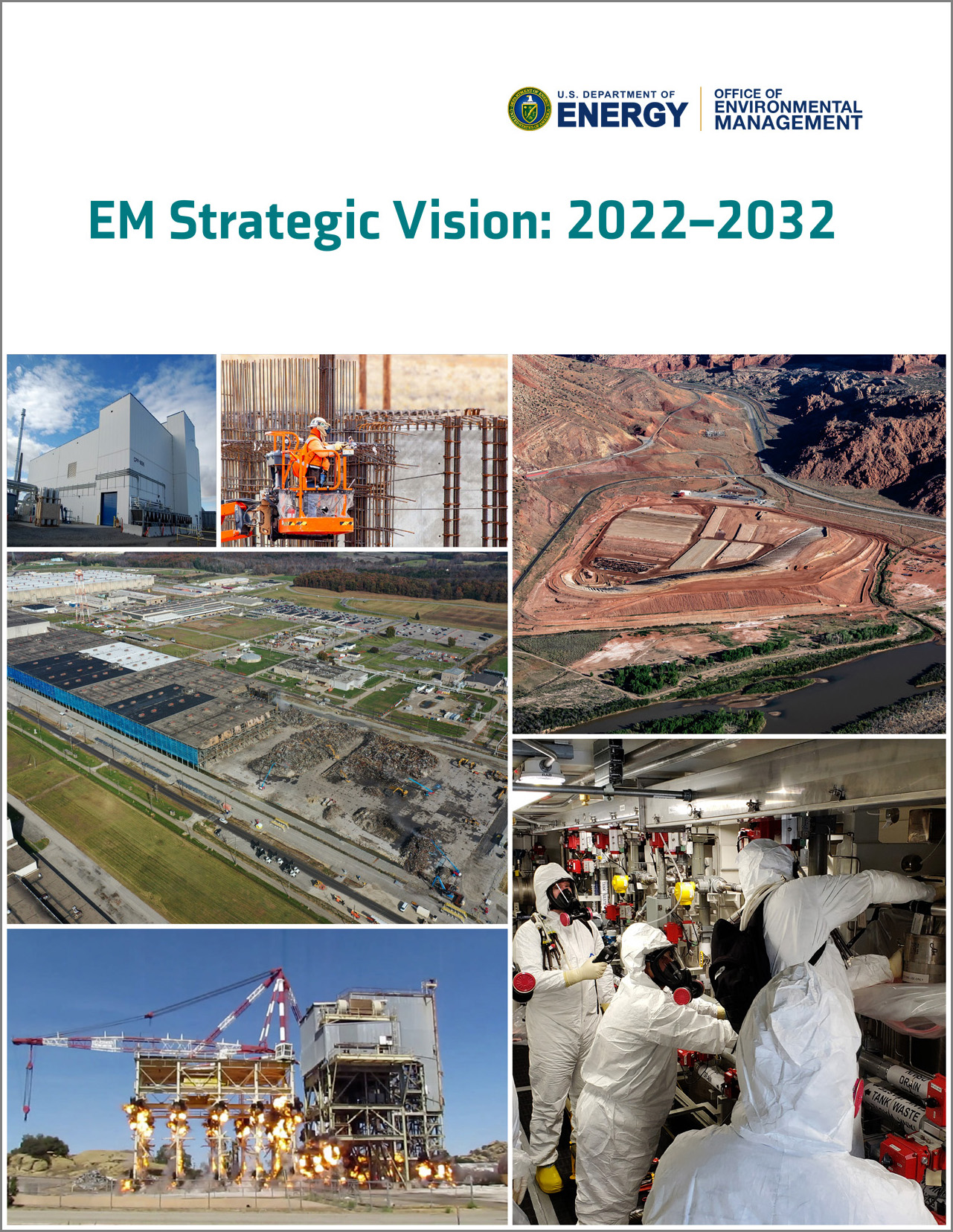 The Department of Energy’s Office of Environmental Management (EM) has issued EM Strategic Vision 2022-2032, a blueprint for planned nuclear-related cleanup efforts over the next decade. The document outlines environmental cleanup priorities for 2022–2032, focusing on safety, innovation, and improved performance.
The Department of Energy’s Office of Environmental Management (EM) has issued EM Strategic Vision 2022-2032, a blueprint for planned nuclear-related cleanup efforts over the next decade. The document outlines environmental cleanup priorities for 2022–2032, focusing on safety, innovation, and improved performance.